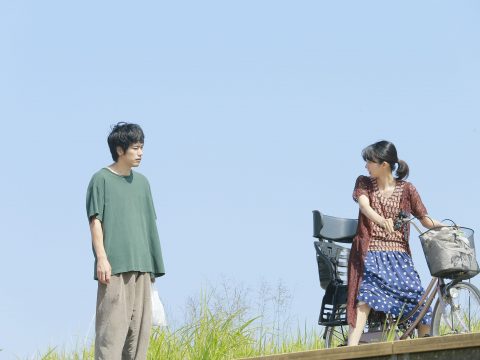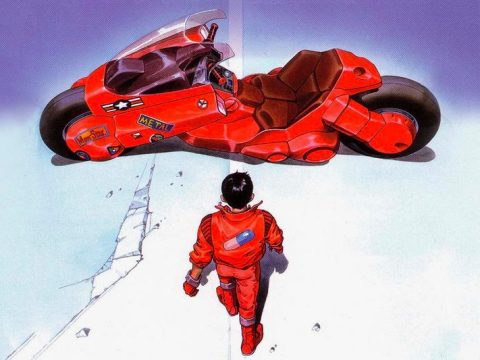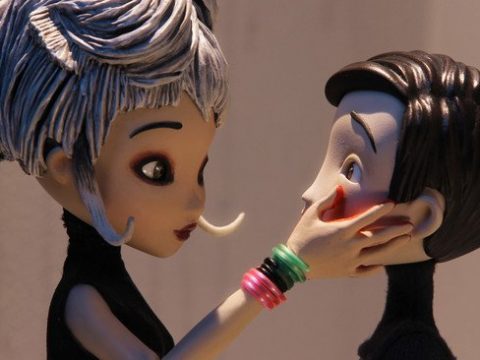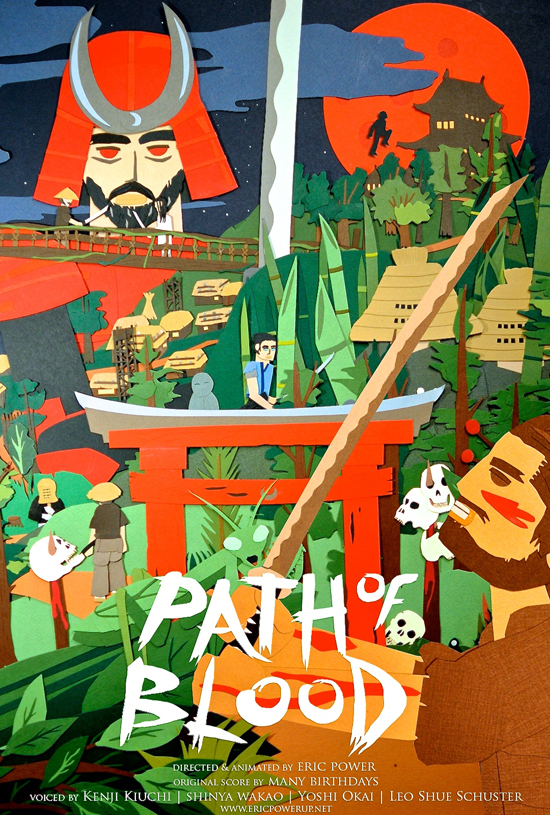 The legacy of chanbara (samurai sword fighting) cinema is vast and worth studying in great detail. Filmmaker Eric Power clearly understands and appreciates the genre’s history, as most recently evidenced in his 61-minute animated film Path of Blood. Available to watch On Demand via streaming service Vimeo, Path of Blood pairs a deep respect for chanbara classics—from the work of Akira Kurosawa to the Zatoichi and Lone Wolf and Cub films and beyond—with some intricately detailed cut paper animation that works surprisingly well in this context without detracting from the action and narrative.
The legacy of chanbara (samurai sword fighting) cinema is vast and worth studying in great detail. Filmmaker Eric Power clearly understands and appreciates the genre’s history, as most recently evidenced in his 61-minute animated film Path of Blood. Available to watch On Demand via streaming service Vimeo, Path of Blood pairs a deep respect for chanbara classics—from the work of Akira Kurosawa to the Zatoichi and Lone Wolf and Cub films and beyond—with some intricately detailed cut paper animation that works surprisingly well in this context without detracting from the action and narrative.
The year is 1614 and a ronin named Kazuo finds himself roaming the Japanese countryside for work, or perhaps something more. An opportunity to put an end to this wandering existence is said to lie down a path through the mountains, but none who have attempted the journey have ever returned. Whether or not this is reality or myth remains to be seen, but either way Kazuo soon sets out on this perilous trek full of brutal hardships, evil, and a river’s worth of spilled blood.
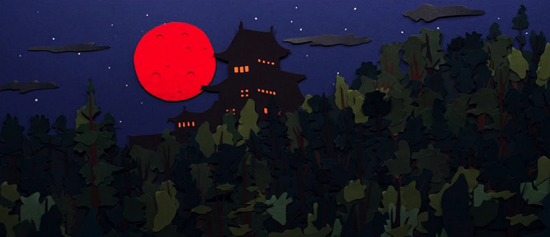
The style of Path of Blood meshes nicely with the chanbara mood, which is something Power remains faithful to throughout. It’s certainly more violent than many of the classics—though definitely more family friendly than something like the Hanzo the Razor films—but it’s the ellipses between battles that really connect. Purposefully meandering moments of silence, garnished with little more than atmospheric sound effects, pepper the landscape. Other than climactic showdowns full of repeated and heavy hits, resulting in more than a few sliced torsos and skinned skulls, swordplay is often as swift and mercilessly decisive as it should be.
Chanbara tropes abound, but thankfully there’s nothing here that hints at parody or anything other than an earnest homage. The care put into Path of Blood is apparent right off the bat, mostly because, well, it’s all hand made. Power’s dedication to cut paper stop motion is admirable, and it certainly looks like the process must have been a grueling one. There’s also some nice shadow animation in there, helping to mix things up and keep the visual motifs interesting over the course of the film.
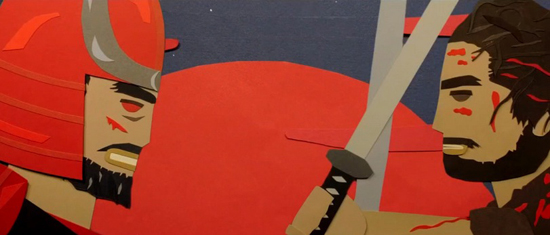
The characters mostly look the same, with their eyes glossed over and bodies tilting with a reliable bob and sway outside of action sequences. What’s truly impressive about Path of Blood is the level of detail put into each scene. True to the films that inspired it, Eric Power’s animation takes its time and lingers on the small things. Drops of rain spread out gradually across parched dirt. Birds soar through the sky. Flowers sway in serene contrast to the bloodshed bookending their presence. I wouldn’t normally expect to call the scenery of a cut paper-animated film beautiful, but some of it really fits the description.
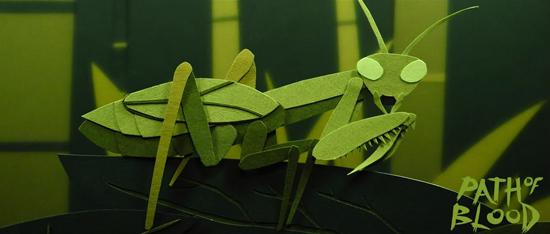
The colors and layers craft a rich atmosphere throughout, but it wouldn’t work nearly as well if it were more polished. One of the reasons I enjoyed Path of Blood is because it looks like what it is: Someone working hard to animate moving pieces of paper. It’s kind of like the earlier seasons of South Park, back when you could see the physical work being put into it. Yes, it looks smoother now that it’s all digital, but there’s a certain charm to seeing the rough edges and the depth of stacked paper.
As fun as Path of Blood is, something vital would be missing were it not for the music of Many Birthdays. The mix of samurai cinema and Spaghetti Western-inspired themes perfectly complement both the quieter moments and the frenetic bursts of action, lending more authenticity to the production than even the Japanese-speaking voice actors. Shinya Wakao (Hajime), Yoshi Okai (Toranosuke), and the rest of the cast do a decent enough job in their roles, but it wouldn’t matter what language any of the characters were speaking without that solid soundtrack backbone.
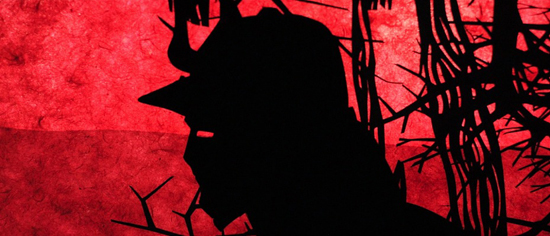
There aren’t any individual elements of Path of Blood that will necessarily blow anyone away, but the work put into the whole is what makes it worth watching. Did I mention it’s also really, really violent? Like the cut paper stop motion version of those new Mortal Kombat X Fatalities violent. So there’s that, too. If you dig chanbara flicks a fraction as much as Eric Power does, you’ll get a kick out of spending an hour wandering down the path with Kazuo.



